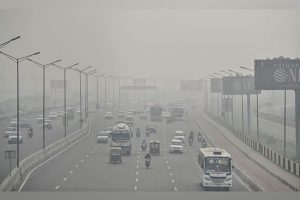Even though the Congress has joined regional parties in raising the issue of caste census, the ‘Mandal’ brand of politics is unlikely to return to Uttar Pradesh in the prevailing scenario.
The regional parties, namely the Samajwadi Party, which is the main opposition parties in UP, had sensed that denting the BJP would be a near impossible task in 2024 since by then the Ram temple would be ready and the BJP’s Hindu plank would be reinforced like never before.
Advertisement
UP Chief Minister Yogi Adityanath had already given a peek into the 2024 poll issues when he said that the election would be 80 versus 20 — 80 being Hindus and 20 being minorities.
The Samajwadi Party raised the caste census card to change the arithmetic to 85 versus 15 — 85 being OBCs & Dalits and 15 being upper castes.
The BJP sensed that any such exercise would inflame caste-based social and political sentiments and harm the Hindutva-nationalist project. Caste has always been an intrinsic component of Indian democracy.
As a veteran BJP functionary puts it, “One’s caste can control access to political power, land, and police or judicial assistance. Castes also tend to influence local politics by being local to certain areas. A caste census may increase caste feelings in some people and that may lead to clashes, especially in villages where maintaining anonymity is difficult. Political parties will then tend to represent the interests of specific castes and the inclusiveness of policy-making will be lost.”
The Samajwadi Party believed that an enumeration of the OBCs in a caste census will provide hard data about their numerical strength in different states.
These numbers will further be utilised to examine the share of the OBCs in different state institutions.
“It is obvious that most of the sectors of power, such as the judiciary, educational institutions and the media, are controlled and monopolised by the social elites, giving the Dalit-Bahujan groups just a minuscule presence. A caste census will provide the socio-economic nuances of the OBC population and will show that their representation in different institutions is not according to the size of their population. With the acknowledgement of such a precarious social fact, a new political consciousness will emerge amongst the socially marginalised groups, forcing them to initiate a new movement for social justice,” said an SP leader.
Interestingly, Uttar Pradesh’s deputy Chief Minister Keshav Prasad Maurya, also gave impetus to backward politics when he backed the opposition demand for a caste census.
“I am all for it,” Maurya said, adding, “neither me, nor my party are in opposition on the subject.”
However, he had no answer as to why Uttar Pradesh has not yet followed the Bihar example, where a caste census has been announced.
While the game plan was unfolding as per the wishes of regional parties, a sudden turn of events has pushed the caste census issue on the backburner and it is now the communal card that is holding centre stage.
The killings of gangster-turned-politician Atiq Ahmad and his brother Ashraf and the encounter of his son, Asad has left the atmosphere in Uttar Pradesh highly surcharged on communal lines.
The BJP is playing the Hindu card with a vengeance by justifying the ‘end of mafia’ but regional parties are undecided about their stand.
All they have done so far is to term the encounters as ‘fake’.
The regional parties, apparently, do not want to lose out on Hindu support.
The caste census issue can now wait for another time, another season in Uttar Pradesh.











